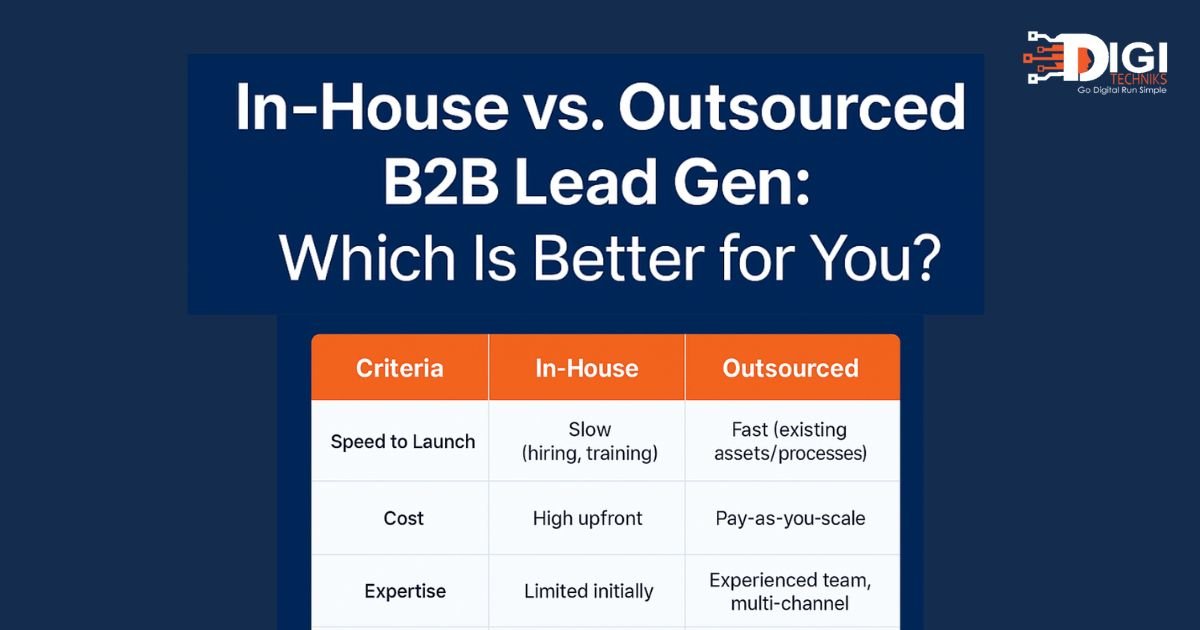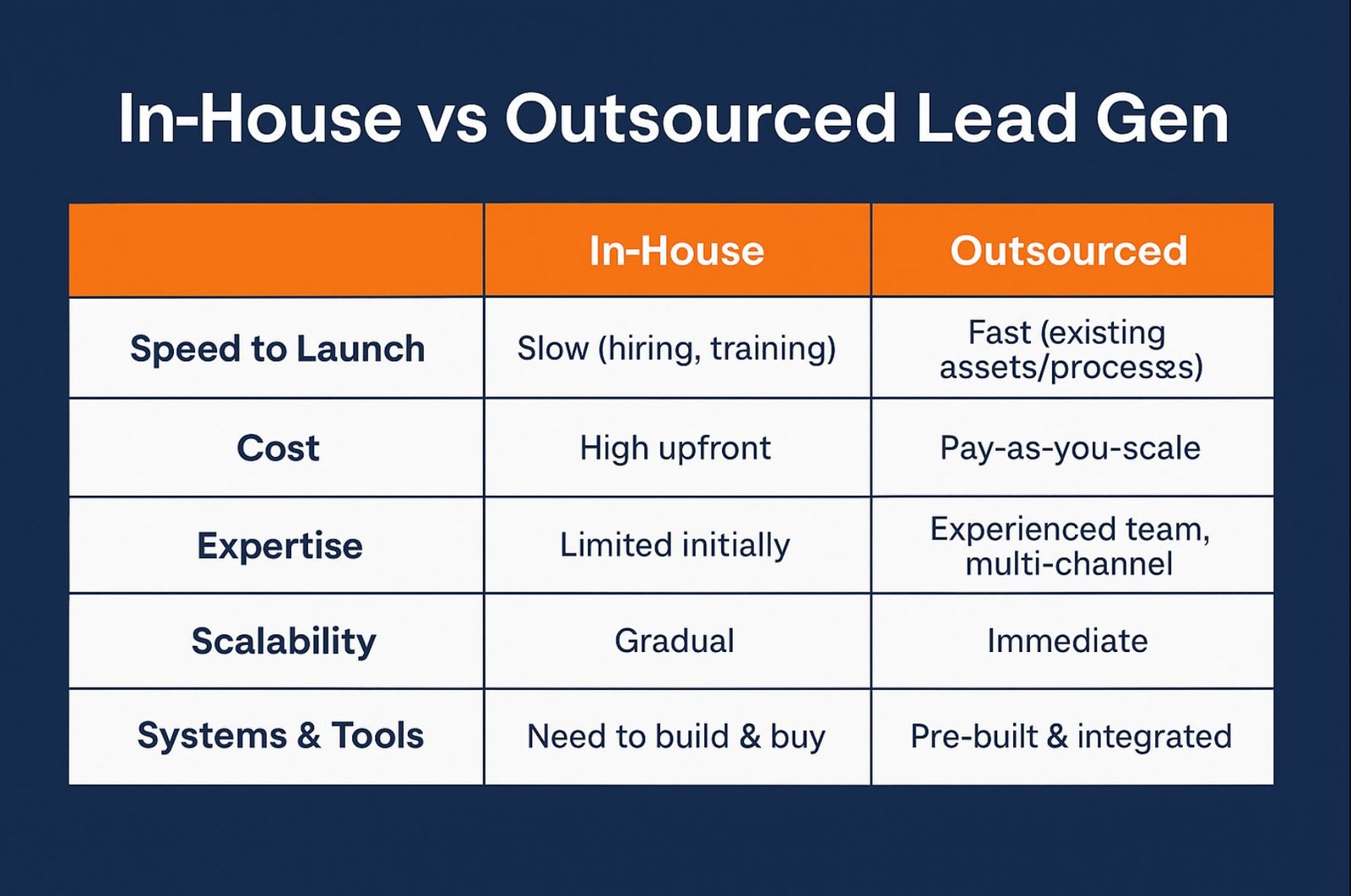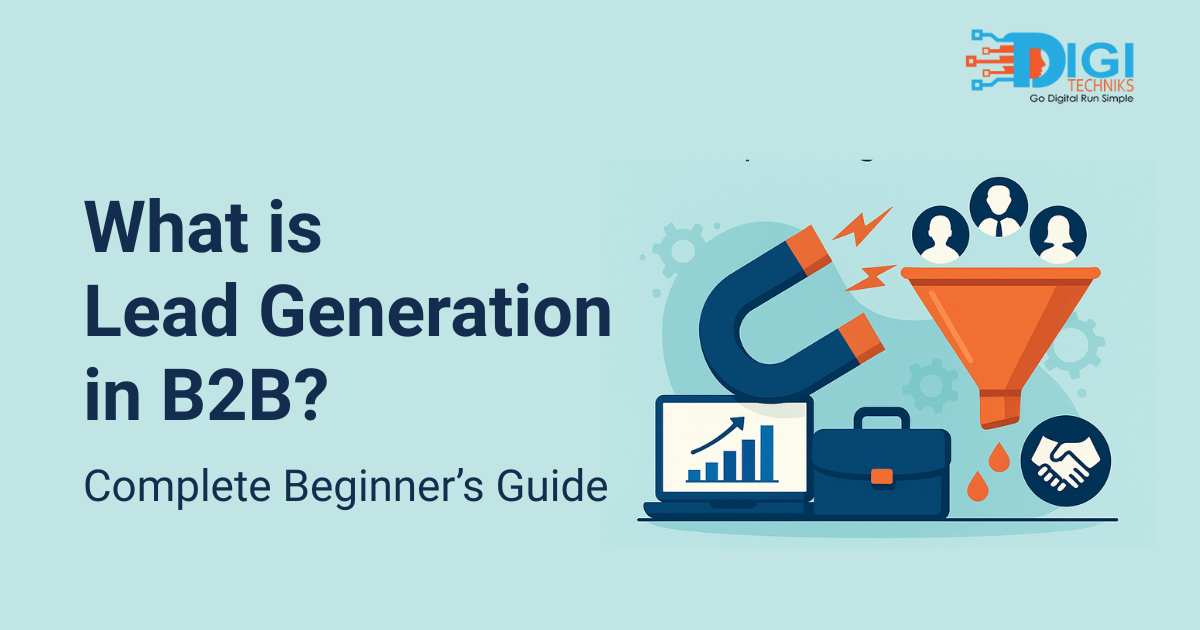
The Growth Dilemma
Every B2B company eventually reaches the same fork in the road: how do we scale our sales pipeline?
On one hand, you could build an internal lead generation team—hire SDRs, buy the right tools, and set up processes from scratch. On the other, you could plug into an experienced B2B lead generation agency that already has the systems and expertise in place.
Either way, the stakes are high. Make the wrong move, and you could lose 6–12 months of runway, burn through budget, and end up with frustrated sales teams waiting for qualified meetings.
We’ve seen companies spend months building internal systems, only to later realize they were reinventing what proven agencies had already perfected.
Key Takeaways:
-
Two Clear Paths – You can either build an in-house SDR/BDE team with your own tools and processes, or leverage an outsourced agency with pre-built systems.
-
In-House Pros & Cons – Offers higher control and ownership but comes with slower setup, higher upfront costs, and costly trial-and-error.
-
Outsourced Pros & Cons – Delivers faster results, scalability, and expertise but requires comfort with shared responsibility and less direct control.
-
Best for Early-Stage & Mid-Market – Outsourcing works best initially. Having one in-house BDE alongside the agency creates a strong bridge and speeds up personalization.
-
Non-Negotiables Before Starting – Conversion-ready website, ICP-driven messaging, case studies, clear response mechanism, and automation-based follow-ups are must-haves.
-
Hybrid Model Wins for Growth – Many mid-market companies succeed by outsourcing outreach while keeping in-house SDRs to manage pipelines and nurture leads.
-
Stage-Based Decision –
-
Early-stage → Outsource with in-house support
-
Growth-stage → Hybrid approach
-
Enterprise → Full in-house with strategic external support
-
-
Core Insight – The right choice isn’t about tactics but about systems. Structured execution beats random lead gen efforts every time.
Bottom line: If speed and predictability matter, outsourcing is the fastest path; if long-term control is the priority, in-house works; and if you want both, go hybrid.
Understanding the Two Paths
When it comes to building a predictable B2B pipeline, companies usually face two clear options: build in-house or outsource to a specialized agency. Both approaches have their strengths, and the right choice often depends on your stage of growth, resources, and urgency to scale.
Going in-house gives you more control over processes, but it comes with a steep learning curve—hiring SDRs, testing messaging, and investing in tools can take months before results show. Outsourcing, on the other hand, allows you to tap into a ready-made playbook with proven outreach systems, but you trade off some level of control for speed and expertise.
✅ In-House Lead Generation
-
Build your own SDR/BDE team
-
Purchase and manage tools (LinkedIn Sales Navigator, email automation, CRM, enrichment)
-
Create messaging, content, and outbound systems from scratch
-
Pros: Higher control, ownership of process
-
Cons: Slower setup, costly mistakes, longer ROI cycles
✅ Outsourced Lead Generation
-
Leverage ready-made outreach systems (LinkedIn, cold email, SEO-driven funnels)
-
Access trained teams with cross-industry experience
-
Get faster results with plug-and-play expertise
-
Pros: Quick launch, proven systems, scalability
-
Cons: Less control, shared responsibility
Some agencies bring more than just outreach—they deliver tested pitch frameworks, automated follow-ups, CRM integration, and segment-based campaigns, cutting months off the trial-and-error process.
Read more: Not Getting Qualified B2B Sales Leads? Here’s What Might Be Going Wrong
In-House vs Outsourced B2B Lead Gen (2025 Comparison)
| Factor | In-House Lead Gen | Outsourced Lead Gen |
|---|---|---|
| Cost | High (salaries, tools) | Lower (pay per lead/service fee) |
| Speed | Slow setup | Quick scale-up |
| Expertise | Limited to team | Specialized experts |
| ROI | Medium–long term | Faster ROI |
| Best For | Large enterprises | Startups & SMBs |
Pros & Cons: In-House vs. Outsourced
No approach is perfect. The key is to weigh the trade-offs clearly so you can choose what fits your stage and resources. In-house models give you control and ownership but demand heavy upfront investment in time and money. Outsourced agencies remove that burden with ready systems, but you’ll need to be comfortable with shared execution and collaboration.

A side-by-side comparison makes the differences easier to evaluate:
| Criteria | In-House Team | Outsourced Agency |
|---|---|---|
| Speed to Launch | Slow (hiring, training, system setup) | Fast (pre-built processes and assets) |
| Cost | High upfront (recruiting, salaries, tools) | Predictable pay-as-you-scale model |
| Expertise | Limited initially, builds over time | Experienced team with proven playbooks |
| Scalability | Gradual, depends on hiring pace | Immediate with existing resources |
| Systems & Tools | Must be purchased and built internally | Pre-integrated & optimized frameworks |
Some providers don’t just “run outreach.” They bring automation for follow-ups, LinkedIn inbox management, CRM integration, and pipeline dashboards as part of the service—making them an extension of your sales team, not just an outsourced vendor.
The Best Approach for Early-Stage & Mid-Market Companies
For early-stage and mid-market B2B companies, the lead generation decision isn’t just about cost—it’s about time-to-pipeline. When every quarter counts, outsourcing usually provides the fastest path to consistent meetings. Agencies already have the tools, scripts, and workflows in place, so you can start generating opportunities in weeks instead of months.
That said, the most effective companies don’t completely leave it to the agency. They bring in at least one in-house BDE or SDR from Day 1. This person acts as a bridge—learning the process, personalizing responses, and eventually becoming the foundation for scaling an in-house team later.
Why this hybrid start works:
-
The in-house BDE learns proven processes directly from the agency team
-
Faster response times (replying to prospects within minutes, not hours)
-
Better personalization in follow-ups, which improves conversions
-
Smooth transition to in-house if you decide to build your own system later
We’ve seen businesses thrive when one dedicated executive works side-by-side with the outreach team—responding within 15 minutes, personalizing follow-ups, and closing the loop quickly.
Read also: B2B Lead Generation Services Explained – What You Get & What to Expect
Must-Have Prerequisites Before You Start Any Lead Gen
Whether you decide to build an internal SDR team or outsource to an agency, success depends on the foundation you set before launch. Without the right assets and processes in place, even the best outreach efforts will fall flat.
Here are the non-negotiables every B2B company must have before starting lead generation:
-
A conversion-ready website with:
-
Segment-specific case studies
-
Blog and use case sections that prove authority
-
Clear and compelling CTAs
-
-
Defined revenue goals mapped to meetings → opportunities → closed deals
-
An industry-specific T-Model pitch: one clear, irresistible offer per customer segment
-
A response mechanism: a BDE, SDR, or founder committed to handling replies promptly
-
A follow-up system: automation workflows (email, WhatsApp, LinkedIn messages) that nurture prospects until they’re sales-ready
Some agencies don’t just run outreach—they also help companies set up this foundation by creating ICP-driven messaging, automation flows, and feedback loops. This ensures that when outreach begins, your funnel is built for conversions from Day 1.
A Hybrid Approach: The Best of Both Worlds
For many mid-market B2B companies, the smartest move isn’t choosing between in-house or outsourced—it’s blending both. A hybrid approach gives you the speed of an agency with the long-term control of an internal team.
In this model, you outsource the frontline outreach (LinkedIn campaigns, cold email sequences, SEO-driven lead capture) while keeping lead ownership inside your company. Your SDRs or sales team handle replies, manage the pipeline, and drive conversations to meetings.
Why hybrid works so well:
-
Agencies provide ready-made systems, scripts, and automation for faster scaling
-
In-house executives own the pipeline and customer relationships
-
Knowledge transfer happens naturally, so your internal team learns proven tactics
-
You scale faster with minimal overhead, while still building in-house expertise
Companies that blend internal execution with external systems often see the fastest results—predictable weekly meetings, cleaner pipelines, and minimal operational strain.
Final Verdict: Which One Is Right for You?
The right approach depends on your company’s stage, resources, and urgency:
-
Early-Stage Companies → Outsource first. You’ll get quick access to proven systems while keeping 1 in-house BDE as a bridge for learning and response management.
-
Growth-Stage Companies → Go hybrid. Outsource the heavy lifting while building a small in-house team that gradually takes ownership.
-
Enterprise-Ready Companies → Build fully in-house, but still lean on external specialists for strategy, automation, or overflow support.
There’s no single “best” path—what matters is aligning your lead generation model with your growth goals and capacity. Outsourcing buys speed. In-house builds control. A hybrid model gives you both.
Need Help Setting Up a System Before Scaling?
Before you decide whether to go in-house, outsourced, or hybrid, the most important step is building a solid lead generation foundation. Without clear messaging, ICP targeting, and follow-up systems, even the best outreach efforts won’t deliver consistent results.
At Digitechniks, we help B2B companies set up that foundation—whether it’s refining your strategy, building automation workflows, or designing your T-Model pitch. Once the structure is in place, scaling with in-house teams or external systems becomes far easier.
Book Your Free Lead Quality Audit + T-Model Strategy Session
In 45 minutes, we’ll walk you through:
- Where your current process is losing qualified leads
- How to restructure your outreach for higher response rates
- What proven systems top B2B teams use to get consistent, high-quality meetings
No guesswork. No generic advice. Just a clear plan for better leads.
You can also explore our full guide on Zero‑Budget B2B Lead Generation for organic strategies that complement Cold Email Outreach.
FAQs
What is the difference between in-house and outsourced B2B lead generation?
In-house means building and managing your own SDR team and systems, while outsourced lead generation leverages an agency’s ready-made processes and expertise.
Which is more cost-effective: in-house or outsourced lead generation?
In-house models have higher upfront costs due to hiring and tools. Outsourced agencies typically operate on a predictable, pay-as-you-scale model, making them more cost-effective for early-stage companies.
Can I use a hybrid model for B2B lead generation?
Yes. Many companies outsource outreach for speed while keeping in-house SDRs to manage pipelines, personalize responses, and build long-term control.
What do I need before starting B2B lead generation?
A conversion-ready website, ICP-driven messaging, case studies, a clear follow-up system, and a defined response mechanism (SDR/BDE or founder).
How fast can outsourced B2B lead gen deliver results?
With pre-built systems, agencies can typically launch within 4–6 weeks, while in-house teams may take 6–12 months to build and optimize.

Sharan Kulkarni
Sharan Kulkarni is a B2B Lead Generation Specialist and author of ROI Decoder, with 10+ years’ experience helping SaaS, IT, and service firms generate predictable qualified leads. He leads Digitechniks’ outreach strategies across LinkedIn, cold email, and SEO. Connect with Sharan on LinkedIn



